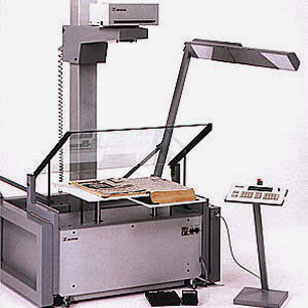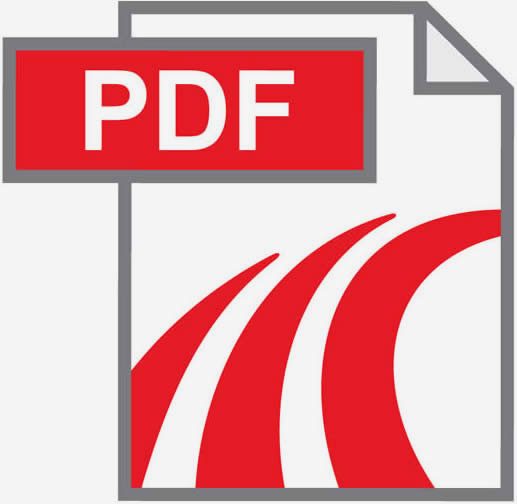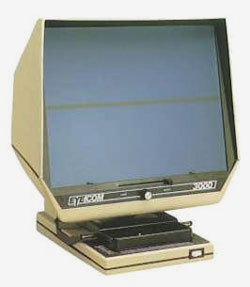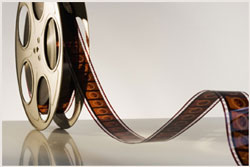- Details
-
Published: Wednesday, 04 March 2015 14:57
Below is a video we discovered recently which shows the process of how the State Library of South Australia archives their newspapers via microfilming. Take a look:
The library itself clearly puts a lot of time and effort into the process and it's nice to see the methods in which they do this. However it does raise a number of questions and a number of points as to why this isn't necessarily the best way to go about archiving newspapers and other historically important documentation. Whilst microfilm was once a brilliant and forward-thinking method of archiving documents and important records, they have been surpassed in many ways, all of which we will look at in the below sections, also looking at the positive aspects of microfilming.
Shelf life

As this video so rightly puts the shelf life of microfilm is around 500 years. This is confirmed by many sources including in this interesting article by e-conservation magazine, which explores the use of microfilm in libraries. However another valid point about this shelf life is that they must be correctly and consistently stored in acid-free boxes and in a room that is at the right temperature and an environment that doesn't change. Whilst we're sure that an organisation such as the State Library of South Australia will follow this as carefully as their microfilming process itself, there will be many that don't and this will cut the shelf life significantly.
Why digital is better...
Whilst it would still be better than that of paper which is supposedly around 100 years, again if kept and stored correctly, we have seen many microfilms that have been sent to us in poor condition almost entirely based on the fact that they haven't been stored well. But this is also precisely why going digital is a better answer these days than the rather obsolete method of microfilming.
Digital images such as JPEG, TIFF and PDF can last for as long as are needed, infinity if they're kept in the right places and backed up and that's a shelf life that can't be topped by microfim or anything else.
Time Taken

Although the above video may show an exceptional organisation, this has been a process that so far has been in operation since the 1960′s, over 50 years. But it's not just about how long it has taken, but also everything else that is involved with that; the need to update technology and equipment over the years. There are at least ten members of staff shown in the above video on this entire process which in comparison to what is available these days is elongated and procrastinating. On top of this, the frame-by-frame inspection is a huge consumer of time.
Why digital is better...
For this entire process, which takes the time of at least ten members of staff, two or three members of staff would do all the work at a professional document / microfilm scanning company.
To go beyond the initial creation of the microfilms themselves, the time taken in searching them and finding what is required with digital would simply wipe the floor with any microfilm reader that patrons of the library or organisation would and would be far less demanding and intimidating. We are used to computers and would always head for a desktop or laptop and not a bulky microfilm reader. Plus with OCR technology being constantly perfected, newspapers can be made fully text-searchable these days after the scanning of the newspapers to digital images is done. This will save patrons a lot of time searching through microfilms for particular references and would need less help from members of staff in the library itself.
Space

Whilst microfilms themselves were made to cut space, and were brilliant at it for a long time, nothing can beat a digital file with no physical preference. To top off the general upkeep required of the microfilm, as well as the ideal storage locations and care, a microfilm collection spanning this many newspapers will take a huge amount of room.
Why digital is better...
Digital documents don't exist in the physical sense, therefore they take no room other than space on a computer hard-drive. However documents and newspapers can be stored on a central server where all computers in the library can reach all records at any time from one place, or images can also be stored online offering the ability to search beyond patrons who come to the library itself.
Equipment

As previously mentioned, over the years the equipment in the above example will have been replaced several times and now that microfilming and the area of microfilm is becoming obsolete, parts are harder to find, are costly and new machines prices rise due to a lack of demand. To top this off microfilming machines tend to be sensitive items which are hard to keep up, even modern examples such as the Zeutschel OK301 mentioned in the above video (albeit not that modern). The Kodak MRD also mentioned as 'old technology' still retails today for at least $5000.
Why digital is better...
To digitise the library would be a one-off cost, and a pretty reasonable one, prices in the UK varying from 10p to 60p per page for the entire digitisation process, no further obscure and obsolete machinery or parts required in the future. With digital images the files will also be easier to use and more flexible, allowing them to be copied with greater ease, printed, saved, emailed and anything else you can do with a digital document.
Another argument: Why microfilming is better...
It might look like we have a big problem with microfilming and that it should be replaced immediately. We don't, we simply believe there is a better way in almost every conceivable fashion. However it is understandable as to why organisations such as the State Library of South Australia would continue to use a system like this, the main one being consistency. When the process was started in the 1960s digital documents didn't exist, in fact the first scanned image only happened in 1957, but wasn't mainstream until the 1990s. Although the opportunity to archive in a more modern way has probably shown itself, consistency was probably quite a large factor when making a decision; why have a room of microfilms and then have the rest of the images digitally? It was possibly also a matter of already having systems, staff and equipment in place to not change things too much.
On the above video's comments section the library themself say that they don't have the resources to archive digitally, however to reposition the staff used for this process would be more than enough to go about digitising and library and another option is to buy scanning equipment the next time a funding review is due.
Perhaps we are biased in our views since, as a business, we digitise documents and microfilms but it's hard to argue with the fact that they offer ease of use, better value and an overall sense of modern progress in a world that is becoming increasingly digital.
Request a Quote | Contact Us | This email address is being protected from spambots. You need JavaScript enabled to view it.

The Scan-do Peopletm
For more information feel free to give us a call:
Nationwide: 0845 22 55 923 London: 0207 183 1885
Manchester: 0161 832 7991 Birmingham: 0121 285 1900












